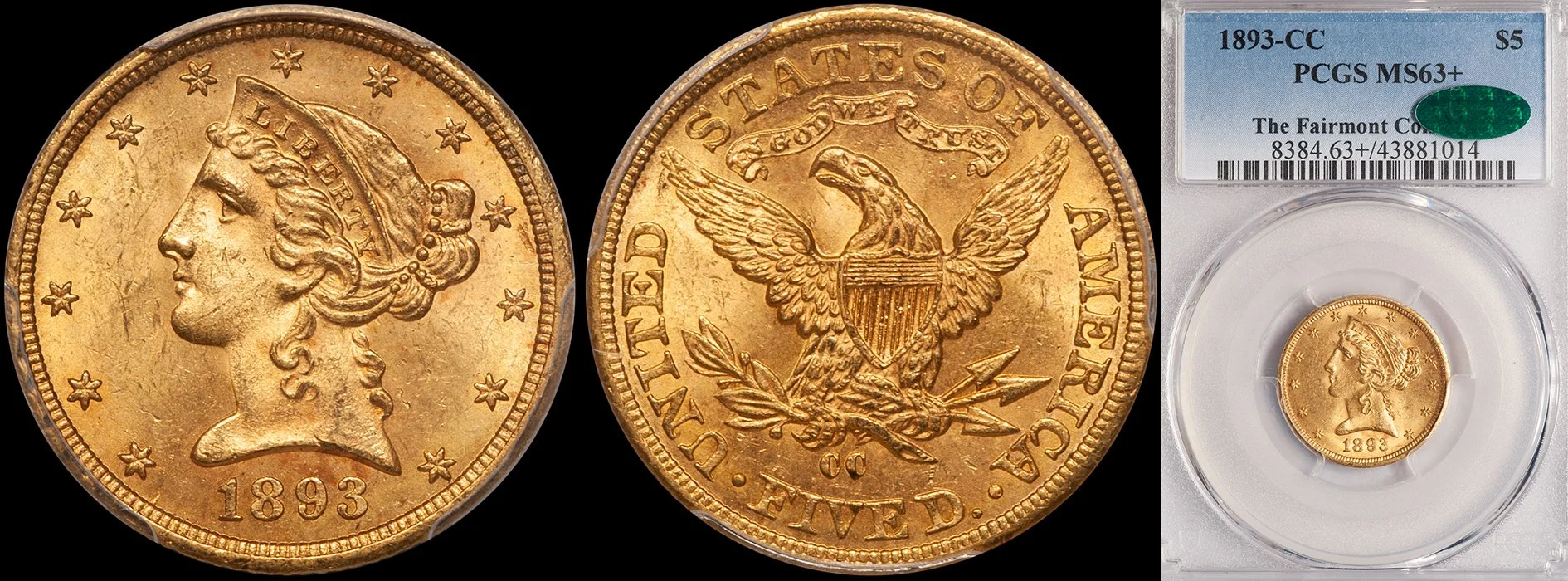The Jascha Heifetz Collection Sale
/For a period of around seven years (1986-1993), Superior became one of the major forces in the United States coin auction market. During this time, they conducted a number of extremely impressive sales which included some of the more interesting specialized collections of this era. Today’s generation of collectors seems to have little knowledge of these Superior auctions and this is a shame as some of them are invaluable references. In my opinion, the single greatest sale that Superior conducted during this era was the Jascha Heifetz collection which was held from October 1st to October 4th in 1989. Heifetz (1901-1987) is regarded as one of the greatest violin players of all-time and he was paid rock-star fees for performances during his lifetime. This meant that Mr. H was able to lead the good life, including a stately mansion in Beverly Hills, a weekend getaway in Malibu, a Bentley and the ability to indulge in hobbies such as coin collecting.
If I remember correctly, the majority of the United States coins in this sale were not actually owned by Heifetz. There were extremely interesting consignments from other collectors including an incredible run of San Francisco gold coinage, remarkable type coins, choice Patterns and a small run of early dollars which included stunning Gem examples of the 1795 Flowing Hair and Draped Bust as well as a mind-boggling 1799.
Something that I find very interesting about this sale is that it is one of the last major auctions conducted by Superior that included a large number of fresh, unslabbed coins. By 1989, the concept of slabbing high quality coins had become pretty standard. But it is interesting to see that a number of very nice raw coins were still available.
What I find even more interesting is looking back at the Heifetz catalog and seeing how nice the coins were back then. And I’m not talking about common coins in uncommon grades. The sale included long, long date runs of items like PR64 and better Morgan dollars with lovely original color, really nice mintmarked gold in VF, EF and AU grades with original color and surfaces and Proof gold from the 1860’s and 1870’s in PR63 to PR65 grades that doesn’t look like it recently escaped from a Science Project Gone Awry. In 1989, you could still find many coins like this in a good auction. Today, you simply can’t.
The Heifetz sale realized $16.3 million dollars. In this day and age, this amount is no big deal. But back in 1989 it was a ton of money for an auction. And if you spend a little time looking at the coins in the sale, guesstimating what they would grade today and figuring numbers...this sale would probably bring well over $50 million today!
You don’t believe me when I tell you the coins in this sale were cheap, cheap, cheap? How about a few random examples. Lot 3770 was a beautiful NGC MS65 1892-O Micro O half dollar in MS65. It sold for $20,900 in the Heifetz sale; today it’s easily a six-figure coin. A nice PCGS EF40 1794 dollar was offered as Lot 3814 and it sold for $39,600. Today, you couldn’t buy a 1794 dollar that had been run over by a train for less than $40k. Lot 3995 was an NGC EF45 1841 quarter eagle that was bid up to $25,300. Today, this coin is probably in an AU53 or 55 holder and is worth something north of $100,000. Lot 4426 was a raw 1857-C half eagle graded EF45. From the photo I’d say it’s an AU55 by today’s standards. It sold for $770 at the Heifetz auction. I am a seller of coins like this in 2007 for around $3,500-4,000.
My favorite coin in the sale was Lot 3816, a 1795 Draped Bust that was graded “MS66 Superb” by Superior. In case you aren’t aware of this, Superior had a reputation for being very conservative with their grading back in the 1980’s and early 1990’s and for an early dollar to be graded MS66...well, it had to be a really special coin. And this piece was just breathtaking. Amazing color, nearly prefect surfaces, incredible details; I remember thinking that if I could own just one United States coin this 1795 dollar would have to be pretty high up on the list. It wound-up selling for $231,000 which was an amazing price at the time but which seems cheap today.
One last lot—then I’ll stop. A raw VF30 1870-CC double eagle was sold as Lot 5060. I paid $18,700 for it and sold it to a client for $20,000. He recently sold the coin back to me (after we sent it in for grading where it was called an EF40). I sold it for nearly 12x his original cost. Not bad for a heavily circulated Carson City double eagle!
Looking back at the Heifetz sale, it’s amazing how much has changed in the past two decades. Superior imploded a few years after the Heifetz sale and is now an entirely different company than the firm that conducted the great run of auctions from 1986 to 1993. $16 million dollar auctions are now commonplace. Auctions are now full of slabbed coins. Grading standards are clearly different and prices have, in many cases, risen dramatically since 1989. Most interesting, what seemed pedestrian in 1989—from the standpoint of available coins—is now unusual if not downright rare today. In many ways, the Heifetz sale was the end of an era and this epic, impressive auction deserves to be better-remembered than it is today.










